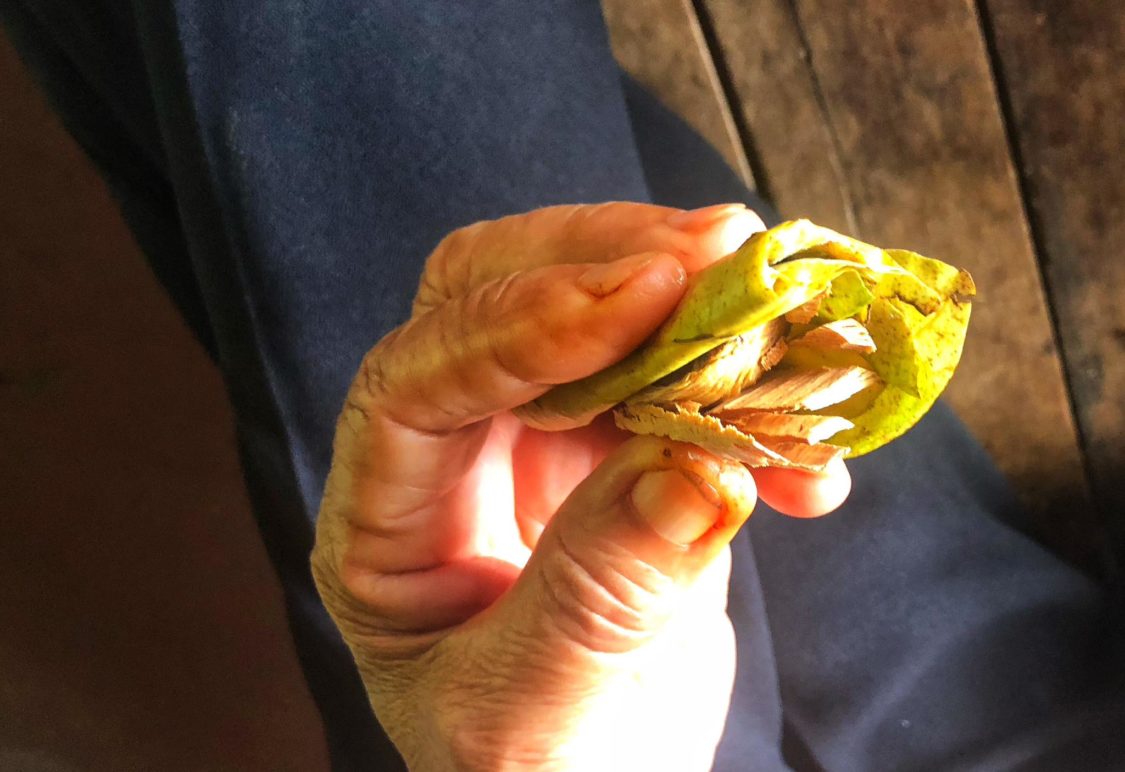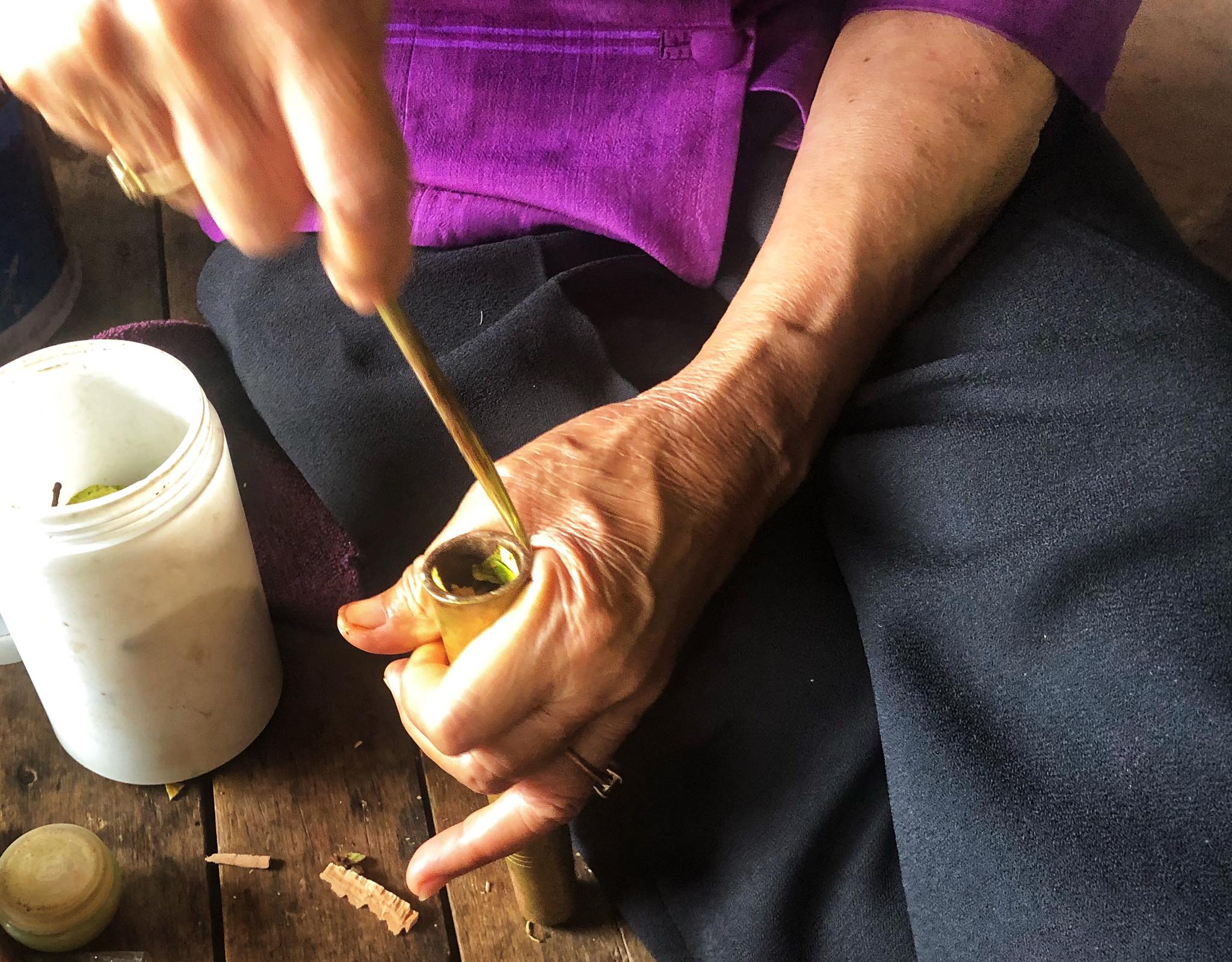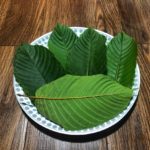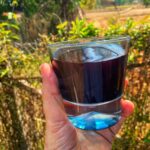
Betel Nut & Leaf Chewing in Thailand

Marijuana and Kratom have gotten all the publicity in Thailand with their recent legalization. However, betel nut and betel leaf have been used by Thais for centuries for their medicinal and psychoactive properties.
There is an ancient pillar from the Sukothai Period (1238-1438) that reads:
“Betel forests were cultivated throughout the city. Everywhere there were betel nut forests, betel forests, farms, fields, and homesteads.”
You’ll note that that inscription differentiates between betel nut forests and betal forests. This is because betel leaves and betel nuts come from two different kind of plants.
Betel nut, which is called “maak” (หมาก) in Thai, comes from the Areca catechu palm tree and is often used as a mild stimulant due to its psychoactive properties. Betel leaf meanwhile is obtained from the Piper betle vine and used for its medicinal benefits and to produce a sense of well-being.
Betel chewing is a traditional practice that involves chewing the areca nut (betel nut) along with slaked lime and other flavoring agents, wrapped in a betel leaf. The leaf is often also chewed by itself, without the nut.

Betel Chewing in Thai Culture
Betel chewing (both the nut and the leaf) has been an integral part of Thai culture, originating with its use in Brahman religious ceremonies. It also has played a significant role in other traditional Thai ceremonies.
In the past, offering betel nut and betel leaves were a customary gesture of hospitality, respect, and goodwill in Thailand. Thai weddings, formal gatherings, and religious events were occasions where betel chewing was commonly practiced. It was considered a symbol of camaraderie and a means of strengthening social bonds.
How does betel nut make you feel? The chewing of betel nut wrapped in a betel leaf leads to a sense of increased alertness, wakefulness, and a mild sense of euphoria. As the betel nut is chewed, it releases juices that can cause a tingling or numbing sensation in the mouth and tongue.
Unfortunately, it can stain the teeth red or black and increase salivation, leading to a constant need to spit out excess saliva — which is why it has fallen out of favor with young Thais. It is enjoyed today primarily by elderly rural Thais who no longer care about white teeth or being seen spitting.
Curiously in some ancient Thai literary works, it was not women with white teeth who were considered the most beautiful but women “with teeth as black as onyx” (the color being caused by the chewing of betel nuts). At that time, Thai men would present bundles of betel nuts to Thai women as an expression of their love.
The chewing of the betel leaf by itself has a number of surprising medicinal properties, according to Thai folk medicine (some of which have been confirmed by recent studies).
The Benefits of Betel Leaf include: managing diabetes, lowering cholesterol, improving gut health, alleviating depression, treating asthma, and curing bad breath. Betel leaf also is used to make poultices to treat wounds and acne, as the leaf has anti-fungal, anti-microbial, and anti-inflammatory properties.

Preparation of Betel Nuts and Leaves for Chewing
The process of preparing betel nut and betel leaves for chewing in Thailand involves several steps:
1. Areca Nut Preparation: The areca nut is first sliced into thin pieces or left whole, depending on personal preference. It’s commonly used in its fresh or dried form.
2. Slaked Lime Application (optional): Slaked lime, a chemical compound, is applied to the betel nut slices. This serves multiple purposes, including raising the pH level, releasing alkaloids from the nut, and aiding in the chemical reaction that produces the characteristic reddish-brown color.
3. Betel Leaf Wrapping: A betel leaf is chosen and sometimes softened by briefly heating it over a flame. The treated betel nut pieces are then placed on the leaf, along with additional flavorings like spices or tobacco.
4. Folding and Chewing: The betel leaf is folded around the betel nut slices to create a small, chewable package. Or the leaf is placed into a special device along with the nuts to create a chewable package.
The Thai person places this package in their mouth, and through the process of chewing, the active compounds are released, producing a mild stimulant effect.
- The Hidden Dharma of Thai Language & Culture - May 11, 2024
- The Royal Ploughing Ceremony in Thailand – A History - May 8, 2024
- Dying Well the Buddhist Way in Thailand - May 7, 2024




